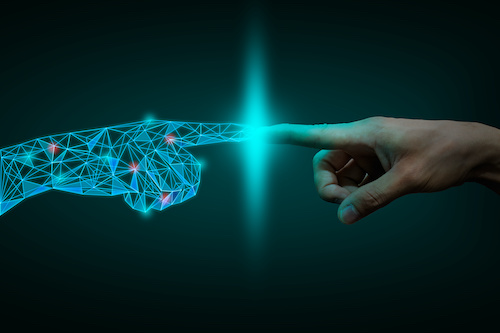Key points:
- Digital learning is a permanent classroom fixture–here’s how to integrate it
- Defining digital curriculum in a new era of learning
- 5 digital tools to enhance your social studies instruction
- For more news on digital trends, visit eSN’s Digital Learning hub
Digital learning isn’t going anywhere–nor should it. Students have to develop critically important digital skills to succeed in higher education and meet their career goals, and they’ll do just that with digital techniques.
But incorporating digital resources and techniques in the classroom can feel daunting, even to the most tech-enthusiastic teacher. Here’s a look at digital education in action in different ways:
What is an example of digital learning?
Minecraft Education is a perfect example of taking a digital resource students already love and using it for learning. “When kids use Minecraft in the classroom, they’re so engrossed in what they’re doing that they forget they’re actually learning,” said technology specialist Kristen Brooks of the Cherokee County School District. “Students excel in their learning when they’re encouraged to create projects in a style or format they prefer.” When students use tools they enjoy, they become more engaged in their learning as they show what they know. Types of digital learning like this are so valuable. Here’s how to use Minecraft Education in your classroom.
What are digital learning activities?
When we look at digital learning examples, if digital content is created without consideration of accessibility, visual processing, and basic design principles, messages can be lost or misinterpreted. Teachers, principals, and district administrators are creating digital content every day for a variety of audiences. From classroom lessons and professional learning resources, to staff guides and announcement graphics, more and more information is being delivered in a visual way. Research shows that we process information presented in visual form more quickly than that presented in writing. However, if digital content is created without consideration of accessibility, visual processing, and basic design principles, the message we are trying to communicate can get lost, or worse, misinterpreted. Here are 3 things to consider when designing digital learning experiences.
What is digital classroom learning?
Right now is the perfect time to start a research project with your students, as it will help them develop skills they will use for the rest of their lives. While your students, who have grown up in the Information Age and think they already know everything, any classroom teacher knows that our students need help more than they think. Our students’ belief that everything they need to know is online can, without the right skillset, leave them prey to misinformation. Let’s teach our students to steer through the online ocean of data to be both effective researchers and responsible digital citizens. Digital learning in education can take many forms. Here’s why digital classroom learning requires digital research skills.
How is digital learning more effective?
When properly integrated, AI can amplify the work of teachers, shrink equity and accessibility gaps, and provide unrestricted access to information. But for technology to make a meaningful change in K-12 education, we need to address the true source of the problem: broken instructional models. These broken models negate positive digital learning for students. Even though countless technology tools have been introduced into the market, classroom practice looks eerily similar to how it did a hundred years ago. That’s because educators are still equipped with an antiquated model of teaching that isn’t designed to be responsive to students’ learning styles. By leveraging AI and technology to rethink traditional teaching methodologies, we can level-set our classrooms to more effectively empower educators and personalize student learning. Effective digital learning means educators must know how to leverage digital tools correctly.
What are digital learning techniques?
One such technique is collaborative learning. There are near-infinite advantages of digital learning. AI has been around for many years, but the introduction of ChatGPT in November 2022 has generated many discussions of how this technology can impact education – both how students learn and how educators teach. While new and emerging technologies can feel like a hurdle at times, there is also much that can be gained by incorporating them into our curriculum. And those benefits are even greater when educators and students learn together, especially as we navigate new tech enablers like AI apps and tools. Here are 9 ways collaborative learning benefits teachers and students.
- Friday 5: Virtual field trips - April 26, 2024
- Google, MIT RAISE launch no-cost AI training course for teachers - April 26, 2024
- 4 ways to support work-based learning - April 23, 2024

